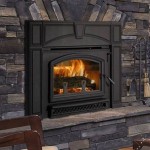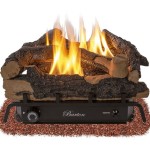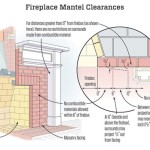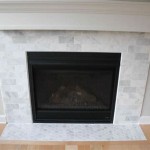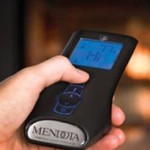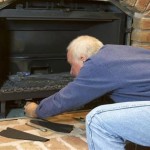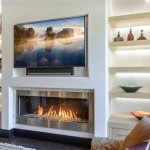Fireplace Insert Gas Heating: A Comprehensive Guide
Fireplace insert gas heating represents a significant upgrade for homeowners seeking to improve the efficiency, convenience, and aesthetic appeal of their existing fireplaces. Unlike traditional wood-burning fireplaces, gas inserts offer controlled heat output, reduced emissions, and simplified operation. This article will explore the various aspects of fireplace insert gas heating, including their benefits, types, installation considerations, and maintenance requirements.
Benefits of Gas Fireplace Inserts
Gas fireplace inserts offer a multitude of advantages over traditional wood-burning fireplaces, making them a popular choice for homeowners looking to modernize their heating systems. One of the primary benefits is increased energy efficiency. Traditional wood-burning fireplaces are notoriously inefficient, with a significant portion of the heat escaping up the chimney. Gas inserts, on the other hand, are designed to maximize heat retention and distribution, resulting in lower energy bills and a reduced environmental impact.
Convenience is another key advantage of gas inserts. Unlike wood-burning fireplaces that require constant tending and wood storage, gas inserts offer push-button or remote-controlled operation. This eliminates the need for manually stoking the fire, adding wood, and cleaning up ashes. Many gas inserts also feature thermostatic controls, allowing homeowners to set a desired temperature and maintain consistent heating throughout the space.
Furthermore, gas fireplace inserts offer improved safety compared to traditional fireplaces. The enclosed firebox prevents sparks and embers from escaping, reducing the risk of house fires. They also eliminate the need for creosote buildup in the chimney, which is a major fire hazard associated with wood-burning fireplaces. Gas inserts also offer cleaner burning, reducing the emission of harmful pollutants into the air.
Finally, gas fireplace inserts enhance the aesthetic appeal of a room. They are available in a wide variety of styles, finishes, and sizes, allowing homeowners to choose an insert that complements their existing décor. Many models feature realistic log sets and flickering flames, replicating the ambiance of a traditional wood-burning fire without the associated mess and hassle.
Types of Gas Fireplace Inserts
Gas fireplace inserts are broadly categorized into two main types: vented and vent-free (or ventless). Each type offers distinct advantages and disadvantages, making it essential to understand the differences before making a purchase.
Vented Gas Fireplace Inserts: These inserts require a chimney or vent to exhaust combustion byproducts outside the home. They typically offer higher heat output and a more realistic flame appearance compared to vent-free models. Vented inserts are considered safer because they completely remove carbon monoxide and other harmful gases from the living space.
There are two sub-types of vented gas inserts: natural vent and direct vent. Natural vent inserts rely on natural convection to draw combustion gases up the chimney. They are generally less expensive but may be less efficient than direct vent models. Direct vent inserts use a sealed combustion system that draws air from outside the home and vents exhaust gases directly outside through a dedicated vent pipe. This type of insert is highly efficient and can be installed in a variety of locations, even those without an existing chimney.
Vent-Free (Ventless) Gas Fireplace Inserts: These inserts do not require a chimney or vent, making them easier and less expensive to install. They burn gas very efficiently, converting nearly all of the fuel into heat. However, vent-free inserts release small amounts of carbon monoxide and water vapor into the living space. For this reason, they are equipped with oxygen depletion sensors (ODS) that automatically shut off the unit if oxygen levels fall too low. Vent-free inserts are typically allowed only as supplemental heating sources and are often subject to local building codes. They are not recommended for use in bedrooms or enclosed spaces.
The choice between vented and vent-free gas fireplace inserts depends on individual needs and preferences, as well as local building codes and safety considerations. It is crucial to consult with a qualified HVAC professional or fireplace installer to determine the most appropriate type of insert for a particular home.
Installation Considerations for Gas Fireplace Inserts
The installation of a gas fireplace insert is a complex process that requires careful planning and adherence to safety regulations. It is highly recommended to hire a qualified and licensed professional for the installation to ensure proper operation and prevent potential hazards. The installation process involves several key steps.
Site Assessment: The first step is to assess the existing fireplace and chimney to determine its suitability for a gas insert. A professional will inspect the chimney for damage, obstructions, and proper draft. They will also measure the fireplace opening to ensure that the chosen insert will fit properly. For vented inserts, the chimney must be in good working order and properly sized to accommodate the exhaust gases. For vent-free inserts, the room must meet minimum size requirements and have adequate ventilation.
Gas Line Installation: A gas line must be installed to supply fuel to the insert. This requires tapping into an existing gas line or running a new line from the gas meter. The gas line must be properly sized and installed according to local codes to ensure adequate gas pressure and prevent leaks. A shut-off valve should be installed near the insert for safety.
Insert Installation: The gas insert is carefully placed into the fireplace opening and secured in place. The gas line is connected to the insert, and all connections are checked for leaks using a gas leak detector. For vented inserts, the vent pipe is connected to the insert and run up the chimney or through a wall to the outside. The vent pipe must be properly sealed to prevent exhaust gases from leaking into the home.
Testing and Inspection: After the installation is complete, the insert is tested to ensure proper operation. The gas pressure is checked, the flame is adjusted, and the thermostat is calibrated. A carbon monoxide detector is installed in the room to provide an extra layer of safety. Finally, the installation is inspected by a local building inspector to ensure compliance with all applicable codes and regulations.
It is important to note that some jurisdictions require permits for gas fireplace insert installations. Obtaining the necessary permits before starting the installation process can help avoid costly delays and ensure compliance with local regulations.
Maintenance and Safety Procedures
Proper maintenance is essential for ensuring the safe and efficient operation of a gas fireplace insert. Regular inspections and cleaning can help prevent potential problems and extend the lifespan of the unit. Certain safety procedures should be followed at all times.
Annual Inspection: It is recommended to have a qualified technician inspect the gas fireplace insert annually. The technician will check the gas line for leaks, inspect the burner and pilot light, clean the firebox and glass door, and examine the vent system for obstructions. They will also test the carbon monoxide detector to ensure that it is functioning properly.
Cleaning: The glass door of the gas fireplace insert should be cleaned regularly to remove soot and residue. Use a glass cleaner specifically designed for fireplaces and avoid abrasive cleaners that can scratch the glass. The firebox should also be cleaned periodically to remove dust and debris. Use a vacuum cleaner or soft brush to remove loose particles.
Vent System Maintenance: For vented gas fireplace inserts, the vent system should be inspected annually for obstructions and damage. Birds' nests, leaves, and other debris can block the vent, preventing proper exhaust of combustion gases. The vent pipe should be checked for rust, corrosion, and leaks. Any damage should be repaired promptly to prevent carbon monoxide poisoning.
Carbon Monoxide Detection: Carbon monoxide is a colorless, odorless gas that can be deadly. It is essential to install a carbon monoxide detector in the room where the gas fireplace insert is located. The detector should be placed according to the manufacturer's instructions and tested regularly to ensure that it is working properly. Replace the batteries in the detector at least twice a year.
Safety Precautions: Never store flammable materials near the gas fireplace insert. Keep furniture, curtains, and other combustible items at least three feet away from the unit. Never use gasoline, kerosene, or other flammable liquids to start or clean the fireplace. Always turn off the gas supply to the insert when it is not in use. If you smell gas, evacuate the premises immediately and call the gas company or fire department from a safe location.
By following these maintenance and safety procedures, homeowners can ensure that their gas fireplace insert operates safely and efficiently for many years to come. Seeking professional assistance for annual inspections and repairs is highly recommended to maintain optimal performance and prevent potential hazards.

Contemporary Gas Fireplace Inserts Provide Several Benefits Kozy Heat Fireplaces

Heat Glo Supreme Series Gas Fireplace Insert Best Fire

Gas Fireplaces Inserts Stoves And Heaters The Hearth

Enviro E44 Large Gas Insert 4998

Duluth Forge 27 In W 26000 Btu Black Vent Free Dual Burner Gas Fireplace Insert The Inserts Department At Com

Gas Fireplace Inserts Pros And Cons Of Ventless Fireplaces

Heat Glo Cosmo Gas Insert Fireside Hearth Home

Nordik 34i Kozy Heat Fireplaces

Kozy Heat Fireplaces And Inserts Portland Or Nw Natural Appliance Center

Gas Inserts Victorian Fireplace
Related Posts

